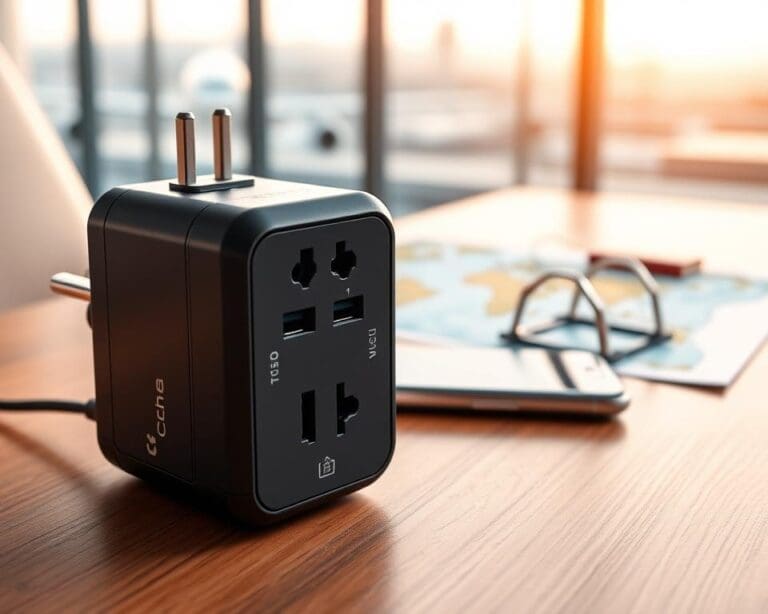As the world shifts towards sustainable living, the concept of energy-neutral homes has gained significant attention. An energy-neutral home is designed to produce as much energy as it consumes over a year, minimizing its carbon footprint.
Achieving energy neutrality requires a combination of energy efficiency measures and the integration of renewable energy sources. This can include everything from enhancing insulation and using energy-efficient appliances to installing solar panels.
The importance of energy-neutral homes cannot be overstated, as they play a crucial role in reducing our reliance on fossil fuels and mitigating climate change.
Key Takeaways
- Energy-neutral homes produce as much energy as they consume over a year.
- Achieving energy neutrality requires a combination of energy efficiency and renewable energy.
- Energy-neutral homes are crucial for reducing our reliance on fossil fuels.
- They help mitigate climate change by minimizing carbon footprint.
- Energy efficiency measures include enhancing insulation and using energy-efficient appliances.
Understanding Energy-Neutral Homes
The concept of energy-neutral homes has gained significant attention in recent years due to its potential to revolutionize the way we think about energy consumption. Essentially, an energy-neutral home is designed to produce as much energy as it consumes over a year, significantly reducing its carbon footprint.
Definition and Basic Principles
Energy-neutral homes achieve their status through a combination of energy-efficient design, high-performance insulation, and the integration of renewable energy systems. The basic principle is to minimize energy demand through efficient building practices and then meet the remaining demand with on-site renewable energy generation, such as solar or wind power.
The Difference Between Energy-Neutral, Net-Zero, and Passive Houses
While often used interchangeably, terms like energy-neutral, net-zero, and passive houses have distinct meanings. Net-zero energy homes produce as much energy as they consume over a year, similar to energy-neutral homes. Passive houses, on the other hand, focus on minimizing energy demand through super-insulation and airtight construction, often without necessarily generating energy on-site. Understanding these differences is crucial for homeowners looking to adopt sustainable living practices. For a step-by-step guide on making your home more sustainable, you can visit this resource.
Historical Development of Energy-Neutral Housing
The concept of energy-neutral housing has evolved significantly over the past few decades, driven by advances in building technology and a growing awareness of environmental issues. Early examples of energy-efficient homes date back to the 1970s, but it wasn’t until the 1990s and 2000s that the concept of energy-neutral homes began to take shape, with the development of net-zero energy homes and passive house standards. Today, energy-neutral homes are at the forefront of sustainable building practices, offering a viable solution to reducing our reliance on fossil fuels.
The Benefits of Energy-Neutral Living
The benefits of energy-neutral living are multifaceted, enhancing not only the environment but also the quality of life for residents. Energy-neutral homes are designed to minimize environmental impact while providing a comfortable and sustainable living space.
Environmental Impact and Carbon Footprint Reduction
One of the primary benefits of energy-neutral homes is their ability to significantly reduce carbon footprint. By utilizing renewable energy sources and minimizing energy consumption, these homes contribute less to greenhouse gas emissions. According to the U.S. Environmental Protection Agency (EPA), a typical household can reduce its carbon footprint by 2-5 tons annually by adopting energy-efficient practices.
Financial Advantages and Utility Savings
Energy-neutral homes also offer substantial financial benefits. By reducing energy consumption through efficient insulation, windows, and appliances, homeowners can save significantly on utility bills. A study by the National Renewable Energy Laboratory found that energy-efficient homes can save homeowners between $300 to $500 annually on energy costs.
| Benefit | Description | Average Savings |
|---|---|---|
| Energy Consumption Reduction | Efficient insulation and appliances | $300 – $500 per year |
| Utility Bill Savings | Renewable energy sources and energy-efficient systems | 20% – 30% reduction |
| Carbon Footprint Reduction | Minimized greenhouse gas emissions | 2-5 tons per year |
Increased Comfort and Quality of Life
Energy-neutral homes are designed to provide a more consistent and comfortable indoor climate. With advanced insulation and climate control systems, these homes maintain a comfortable temperature year-round, enhancing the overall quality of life for residents.
Energy Independence and Resilience
By generating their own energy through renewable sources like solar or wind power, energy-neutral homes achieve a level of energy independence. This not only reduces reliance on the grid but also provides resilience during power outages or natural disasters.
Optimal Insulation: The Foundation of Energy Neutrality
Optimal insulation is the cornerstone of energy-neutral homes, providing a foundation for reduced energy consumption. Effective insulation strategies play a crucial role in minimizing heat loss during winter and heat gain during summer, thereby reducing the need for heating and cooling.
Wall and Roof Insulation Technologies
Various insulation technologies are available for walls and roofs, each with its unique benefits and characteristics. The choice of insulation material depends on factors such as climate, budget, and personal preference.
Spray Foam vs. Rigid Foam vs. Natural Insulation
Spray foam insulation offers high R-values and air-tight sealing, making it an effective choice for many homes. Rigid foam insulation provides durable, long-lasting insulation with high R-values per inch. Natural insulation materials, such as wool and recycled denim, offer eco-friendly alternatives with good thermal performance.
| Insulation Type | R-Value per Inch | Moisture Resistance |
|---|---|---|
| Spray Foam | 6.0 – 7.0 | High |
| Rigid Foam | 5.0 – 7.0 | High |
| Natural Insulation | 3.0 – 4.0 | Variable |
Achieving Optimal R-Values
Achieving the optimal R-value depends on the climate zone and the specific design of the home. Generally, higher R-values are recommended for colder climates to ensure adequate insulation against heat loss.
High-Performance Windows and Doors
High-performance windows and doors are critical in preventing heat transfer and air leakage. Features such as double or triple glazing, gas fills, and low-E coatings enhance their energy efficiency.
Addressing Thermal Bridges and Air Leakage
Thermal bridges and air leakage can significantly compromise the energy efficiency of a home. Techniques such as using continuous insulation, sealing gaps, and installing thermal breaks can mitigate these issues.
By combining optimal insulation with high-performance windows and doors, and addressing thermal bridges and air leakage, homeowners can significantly enhance their home’s energy neutrality.
Efficient Heating and Cooling Systems
Efficient heating and cooling systems are crucial for maintaining a comfortable indoor climate while minimizing energy consumption. These systems play a vital role in achieving energy neutrality in homes.
Heat Pumps and Geothermal Systems
Heat pumps and geothermal systems are highly efficient solutions for heating and cooling. Heat pumps work by transferring heat from one location to another, rather than generating heat from electricity. Geothermal systems, on the other hand, utilize the stable temperature of the earth to provide heating and cooling, offering a highly efficient and consistent solution.
Radiant Floor Heating and Cooling
Radiant floor heating involves installing heating elements, such as hydronic pipes or electric mats, under the floor to provide warmth. This method can be highly efficient, especially when combined with insulation. Radiant floor cooling systems work similarly, providing a comfortable indoor climate during warmer months.
Energy Recovery Ventilation (ERV) and Heat Recovery Ventilation (HRV)
ERV and HRV systems are designed to improve indoor air quality while reducing energy consumption. These systems recover energy from exhaust air and transfer it to incoming fresh air, minimizing the energy required to heat or cool the ventilation air.
Zoning Systems for Optimized Climate Control
Zoning systems allow homeowners to control the temperature in different areas of their home independently. This can lead to significant energy savings by avoiding the heating or cooling of unoccupied spaces.
By incorporating these efficient heating and cooling systems, homeowners can significantly reduce their energy consumption while maintaining a comfortable living environment.
Renewable Energy Generation
The shift towards renewable energy generation is transforming the way we power our homes. As we strive for energy neutrality, it’s essential to explore the various renewable energy sources and technologies that can help us achieve this goal.
Solar Panel Systems
Solar panel systems are a popular choice for renewable energy generation in homes. They offer a clean and efficient way to generate electricity.
Photovoltaic Technology Options
There are several photovoltaic technology options available, including monocrystalline, polycrystalline, and thin-film solar panels. Each has its advantages and disadvantages.
- Monocrystalline solar panels offer high efficiency and durability.
- Polycrystalline solar panels are more affordable and still provide good efficiency.
- Thin-film solar panels are less efficient but are also less expensive to produce.
Solar Array Sizing and Placement
Proper sizing and placement of solar arrays are critical for maximizing energy production. Factors such as roof orientation, shading, and local building codes must be considered.
Key considerations for solar array sizing and placement include:
- Assessing the home’s energy needs to determine the required solar array size.
- Ensuring the roof has sufficient space and is oriented correctly for optimal sunlight exposure.
- Minimizing shading from trees, buildings, or other obstructions.
Small-Scale Wind Energy Solutions
For homes with suitable wind resources, small-scale wind energy solutions can provide a viable alternative or complement to solar energy.
Small wind turbines can be used to generate electricity, especially in rural or remote areas where wind speeds are sufficient.
Battery Storage and Energy Management
Battery storage is a crucial component of renewable energy systems, allowing homeowners to store excess energy generated during the day for use at night or during power outages.
Benefits of battery storage include:
- Enhanced energy independence.
- Improved grid resilience.
- Optimized energy usage through advanced energy management systems.
Grid Connection vs. Off-Grid Systems
Homeowners must decide between grid-connected and off-grid renewable energy systems. Each has its advantages and challenges.
Grid-connected systems offer the benefit of selling excess energy back to the grid, while off-grid systems provide complete energy independence but require more extensive battery storage.
Key differences between grid-connected and off-grid systems include:
- Grid-connected systems are typically less expensive to install.
- Off-grid systems offer greater energy independence but are more complex and costly.
- Grid-connected systems can provide a backup power source during outages with the right configuration.
Wat Maakt Een Huis Energieneutraal? Key Design Elements
The journey to an energy-neutral home begins with understanding the critical design components that drive energy efficiency. An energy-neutral house is not just about using renewable energy sources; it’s also about minimizing energy consumption through clever design.
Passive Solar Design Principles
Passive solar design is a cornerstone of energy-neutral homes. It involves designing the house to maximize the use of natural sunlight and heat. This can be achieved by carefully planning the layout, orientation, and materials used in the construction.
Building Orientation and Window Placement
The orientation of a house and the placement of its windows play a crucial role in harnessing natural light and heat. By strategically placing windows and designing the building’s orientation, homeowners can significantly reduce the need for artificial lighting and heating.
| Building Orientation | Window Placement | Energy Savings |
|---|---|---|
| South-facing | Large windows | High |
| North-facing | Smaller windows | Moderate |
| East/West-facing | Balanced window size | Low to Moderate |
Thermal Mass Utilization and Heat Storage
Thermal mass refers to materials that can absorb and store heat energy. Using materials like concrete or brick, homeowners can create a thermal mass effect that helps regulate the indoor temperature, reducing the need for heating and cooling systems.
Daylighting Strategies to Reduce Artificial Lighting Needs
Daylighting involves using natural light to illuminate the home. Strategies include installing skylights, using reflective surfaces, and designing open floor plans. By maximizing natural light, homeowners can reduce their reliance on artificial lighting, thereby saving energy.
In conclusion, creating an energy-neutral home requires a holistic approach to design, incorporating elements like passive solar design, strategic building orientation, thermal mass utilization, and effective daylighting strategies. By understanding and implementing these key design elements, homeowners can significantly reduce their energy consumption and contribute to a more sustainable future.
Water Conservation and Management
Sustainable living involves not just energy efficiency but also effective water management. As we strive to create energy-neutral homes, it’s equally important to conserve water, a precious resource. Effective water conservation and management strategies can significantly reduce water waste and promote sustainability.
Rainwater Harvesting Systems
Rainwater harvesting is a simple yet effective way to conserve water. By collecting and storing rainwater, homeowners can reduce their reliance on municipal water supplies. This harvested rainwater can be used for various non-potable purposes, such as irrigation and flushing toilets.
Benefits of Rainwater Harvesting:
- Reduces stormwater runoff
- Decreases demand on municipal water supplies
- Provides a free source of water for non-potable uses
Greywater Recycling for Irrigation
Greywater recycling involves reusing wastewater generated from sinks, showers, and washing machines for irrigation and flushing toilets. This practice not only conserves water but also reduces the amount of wastewater sent to treatment plants.
Greywater recycling systems can be tailored to fit various household needs, from simple DIY setups to more complex automated systems.
Water-Efficient Fixtures and Appliances
Installing water-efficient fixtures and appliances is another crucial step in water conservation. Low-flow showerheads, toilets, and faucets can significantly reduce water usage without compromising performance.
| Fixture/Appliance | Water Savings |
|---|---|
| Low-Flow Showerheads | Up to 2.5 gallons per minute |
| Dual-Flush Toilets | Up to 1.6 gallons per flush |
| Water-Efficient Washing Machines | Up to 30% less water per cycle |
Drought-Resistant Landscaping
Drought-resistant landscaping involves selecting plants that require minimal watering, reducing the need for irrigation. This approach not only conserves water but also lowers maintenance costs.
Tips for Drought-Resistant Landscaping:
- Choose native plants adapted to local climate conditions
- Use mulch to retain soil moisture
- Implement efficient irrigation systems
Smart Home Technology for Energy Management
The integration of smart home technology has revolutionized the way we manage energy consumption. By leveraging advanced technologies, homeowners can now monitor, control, and optimize their energy usage more effectively than ever before.
Energy Monitoring Systems and Usage Analytics
Energy monitoring systems provide real-time data on energy consumption, allowing homeowners to identify areas of inefficiency and make informed decisions. Usage analytics further break down this data, offering insights into daily, weekly, and monthly consumption patterns.
With this information, homeowners can adjust their behavior and optimize their energy usage. For instance, they might shift their usage to off-peak hours or identify appliances that are consuming excessive energy.
Automated Climate Control and Optimization
Automated climate control systems adjust heating and cooling based on the home’s occupancy, external weather conditions, and preferred temperature settings. This not only enhances comfort but also reduces unnecessary energy consumption.
Optimization algorithms learn the home’s thermal characteristics and adjust the climate control system accordingly, ensuring that the home remains comfortable while minimizing energy waste.
Smart Appliances and Lighting Controls
Smart appliances and lighting controls can be programmed to operate during off-peak hours or when energy is cheapest. They can also be controlled remotely, allowing homeowners to turn off devices that were left on by mistake.
Integration with Renewable Energy Systems
Smart home technology can be seamlessly integrated with renewable energy systems, such as solar panels. This integration enables homeowners to maximize their use of renewable energy, store excess energy in batteries, and even sell it back to the grid.
By combining smart home technology with renewable energy systems, homeowners can achieve a higher level of energy independence and reduce their reliance on the grid.
Retrofitting vs. New Construction
As the world shifts towards energy-neutral living, homeowners are faced with a crucial decision: retrofit or rebuild. This decision is pivotal in the journey towards reducing carbon footprints and achieving sustainability.
Assessing Existing Homes for Energy-Neutral Potential
The first step in retrofitting is assessing the current state of your home. This involves evaluating the insulation, window efficiency, and overall energy consumption. Tools like energy audits can provide valuable insights into areas that need improvement.
Step-by-Step Retrofit Approaches
Retrofitting can be a complex process, but breaking it down into manageable steps makes it more achievable. Start with simple upgrades like LED lighting and smart thermostats, then move on to more significant renovations such as adding insulation or replacing windows.
Cost-Effective Upgrade Priorities
When retrofitting, it’s essential to prioritize upgrades based on cost-effectiveness and impact. Typically, sealing air leaks and adding insulation offer significant returns on investment by reducing heating and cooling costs.
Case Studies: Successful Energy-Neutral Renovations
Numerous homeowners have successfully retrofitted their homes to achieve energy neutrality. For instance, a family in California transformed their 1970s-era home into an energy-neutral dwelling by installing solar panels, upgrading insulation, and implementing a smart home energy management system.
These examples demonstrate that with careful planning and execution, retrofitting can be a viable path to energy neutrality, offering both financial and environmental benefits.
Conclusion: The Future of Energy-Neutral Housing
As we move towards a more sustainable future, energy-neutral housing is poised to play a significant role in reducing our environmental impact. The growing demand for sustainable living trends is driving innovation in building design, materials, and technologies.
Energy-neutral homes offer numerous benefits, including reduced energy consumption, lower utility bills, and increased comfort. By incorporating features like optimal insulation, efficient heating and cooling systems, and renewable energy generation, homeowners can significantly reduce their carbon footprint.
The future of energy-neutral housing looks promising, with advancements in smart home technology and energy management systems enabling homeowners to optimize their energy usage. As the industry continues to evolve, we can expect to see more energy-efficient buildings, reduced greenhouse gas emissions, and a more sustainable future for generations to come.
By embracing sustainable living trends and investing in energy-neutral housing, we can create a better tomorrow, one home at a time.













